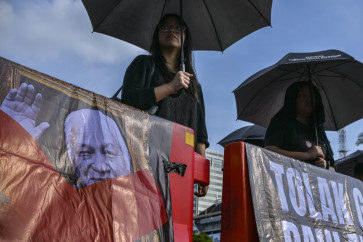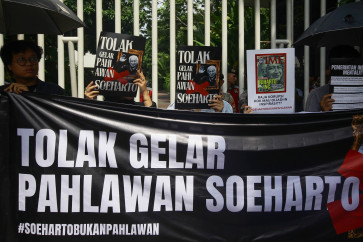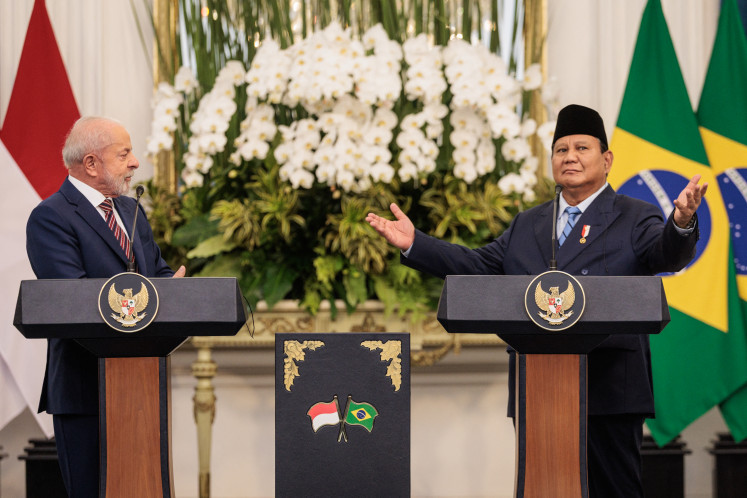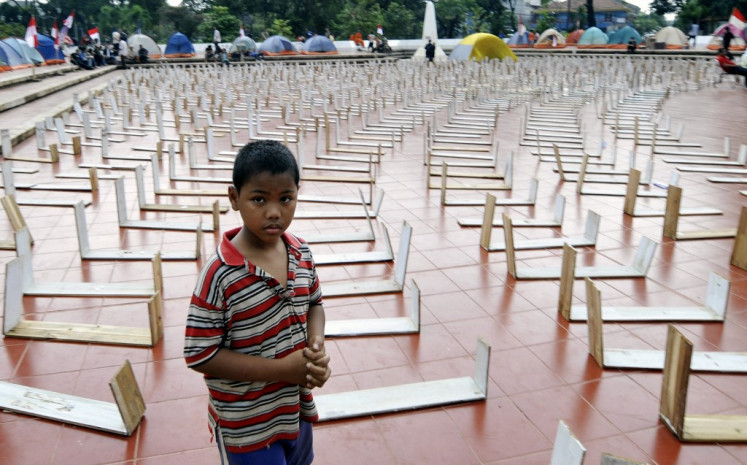Popular Reads
Top Results
Can't find what you're looking for?
View all search resultsPopular Reads
Top Results
Can't find what you're looking for?
View all search resultsILO urges Indonesia to intensify child labor eradication efforts
Change text size
Gift Premium Articles
to Anyone
A
UN body has urged Indonesia to strengthen law enforcement and intensify monitoring to reach its goal to be free of child labor by 2022.
International Labor Organization (ILO) country director Francesco d'Ovidio said the government should implement a monitoring system in a "scientific and professional way" in its efforts to eradicate child labor.
"For that they need to have labor inspectors trained to detect children," d'Ovidio told reporters on Wednesday following a seminar to commemorate World Day Against Child Labor 2016 in Jakarta.
The ILO-initiated international day this year focuses on ending child labor in supply chains at a global scale.
The organization estimates around 168 million children around the world are still trapped today. The number saw a decrease from the 245.5 million in 2000.
d'Ovidio said not only has there been a significant drop globally but this would also include reductions in Indonesia in the worldwide statistics.
However, he said, there was no official data in 2016 indicating how many children were stuck doing forced labor in the country.
Citing data from several years ago, d'Ovidio said there were approximately 1.5 million children in Indonesia who were victims of child labor, 1.3 million of whom were categorized as being under the "worst labor conditions."
He further expressed regret for the lack of new statistics and called on the government to address the issue to have a clear picture of the present situation and henceforth see the evolution of future improvements.
Manpower Ministry official Laurend Sinaga reiterated that the Labor Law prohibited all corporations from employing children, as evidence of the government's clear objection toward the exploitative business practices.
Laurend, who is the acting director of work norm inspection for women and children, said the government had also been implementing efforts in eradicating child labor through a program called Family Hope since 2008 and had subsequently rescued and retrained 80,163 children thus far.
He said, however, several industry sectors continued to dominate as most likely to exploit children, namely agriculture, services sector and garment manufacturing.
Assessment and remediation manager from international clothing company giant GAP, Toni Wahid, said the problem sometimes stemmed from the children who would provide false documents to apply for jobs.
In its preventative efforts, Toni said the company had set strict criteria to verify documents in the application process, which he said would come in the thousands.
Throughout the 93 factories GAP operates around Indonesia, he pointed out the highest number of underage applicants came from Sukabumi in West Java and Jakarta, as well as areas in Central Java.
"In Sukabumi there are an especially high number of falsified documents. Although there are no exact numbers, I estimate around 20 to 30 percent of the total lack authenticity," Toni said. (dan)










